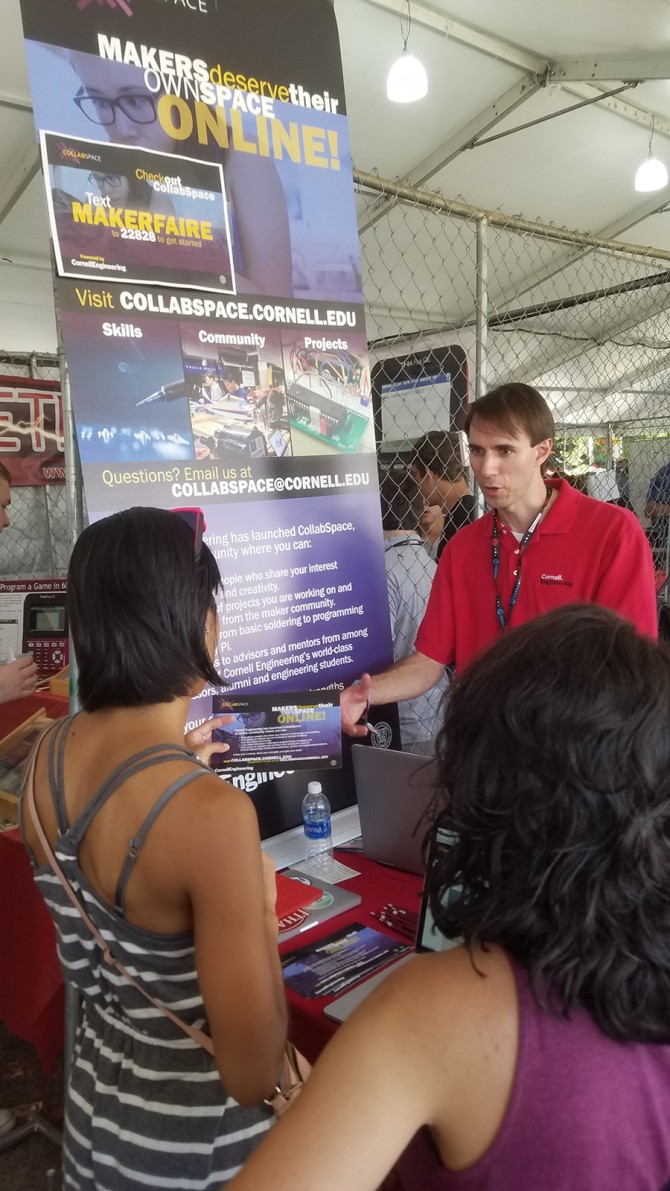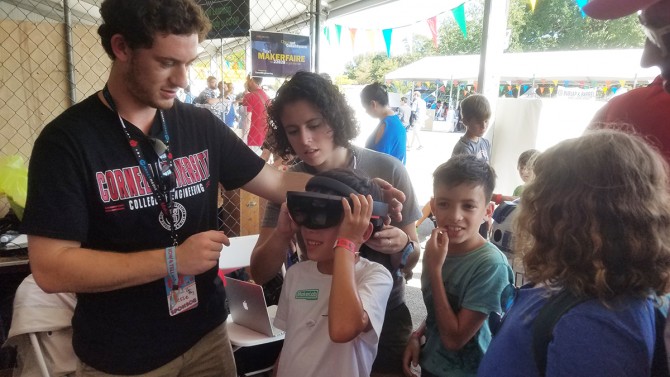Cornell inspires at World Maker Faire in NYC
By Syl Kacapyr
It’s not every day you get to meet R2D2, but thousands of aspiring engineers did just that, thanks to a group of Cornell students who escorted the “Star Wars” droid from campus to the World Maker Faire in Queens, New York, Sept. 23-24.
The event – which annually attracts about 90,000 people – was billed as a celebration of arts, crafts, engineering and science projects with a do-it-yourself mindset. Nineteen students from the Cornell Cup project team made the trip to showcase their life-size R2D2 droid that was custom built as a mobile lab assistant. They also allowed faire goers to get hands on with modular mini-bots and a HoloLens augmented reality headset.
“It was really fun,” said Alexa Ditonto, a graduate student in the field of engineering. “I see this stuff every day and so to see little kids and even adults get excited, it was fun because sometimes I forget how cool it really is.”
David Schneider, team adviser and director of the systems engineering master’s program, said it’s an honor to represent Cornell at the event.
“The students get a real kick out of inspiring the next generation. They remember what it was like and I’m sure appreciated anyone who took the time to show them something cool, so now they get a chance to show off their work in that same way.”
Cornell Engineering staff attended the event to engage young do-it-yourselfers, also known as makers, with the recently launched CollabSpace – a free social website where anyone can share projects, learn maker skills, and connect with Cornell faculty and students with similar passions. Makers were excited to learn about the site’s growing online community, and many of them created accounts on the spot.
Across the faire grounds, the Physics Bus and its shiny, foil exterior was another popular attraction. The bus presented about 30 different hands-on science exhibits, most of them created through the Xraise community outreach program run by the Cornell Laboratory for Accelerator-Based Sciences and Education (CLASSE).
Many of the experiments, such as a plasma cutter used to liquefy aluminum, are related to electricity and magnetism because of the bus’s connection to Cornell’s accelerator, according to Erik Herman, science education specialist at CLASSE.
“There’s a spark created that I believe fuels a fire that’s a love for physics,” said Herman. “We want to put it in a fun context because I think it changes their relationship to the word ‘physics.’”
Claire Fox, an evolutionary biology doctoral student, was helping to run one of the exhibits inside the bus.
“More so than going to other locations, people at Maker Faire ask us questions like ‘how long did it take to build this or how can I make this?’ People who come here are already in the mindset that they can do this when they get home, they can be makers,” said Fox.
Syl Kacapyr is public relations and content manager for the College of Engineering.
Media Contact
Get Cornell news delivered right to your inbox.
Subscribe
